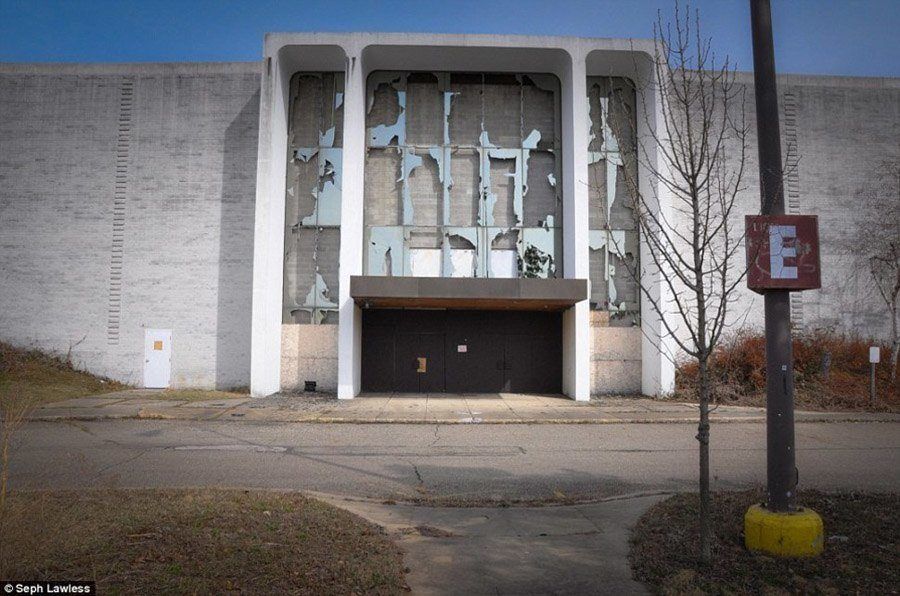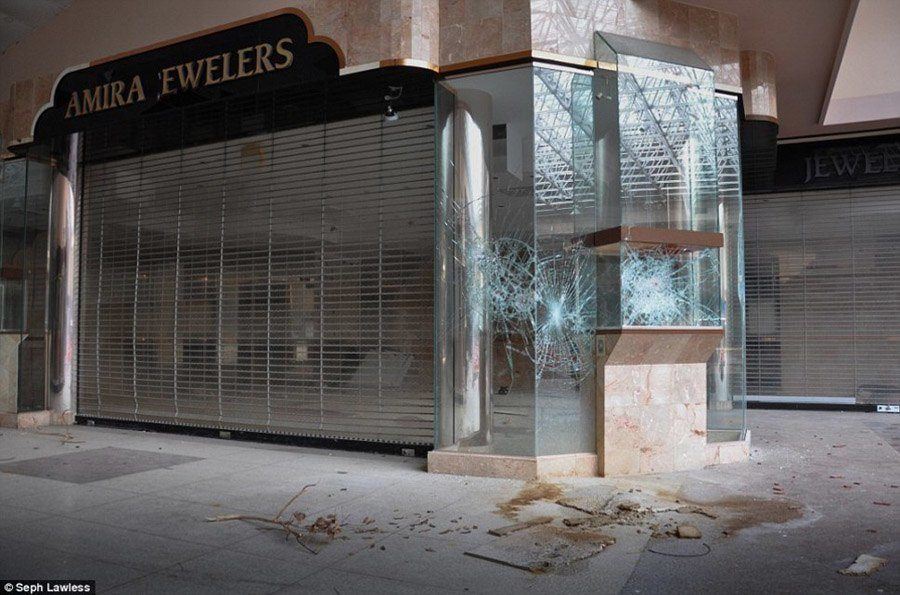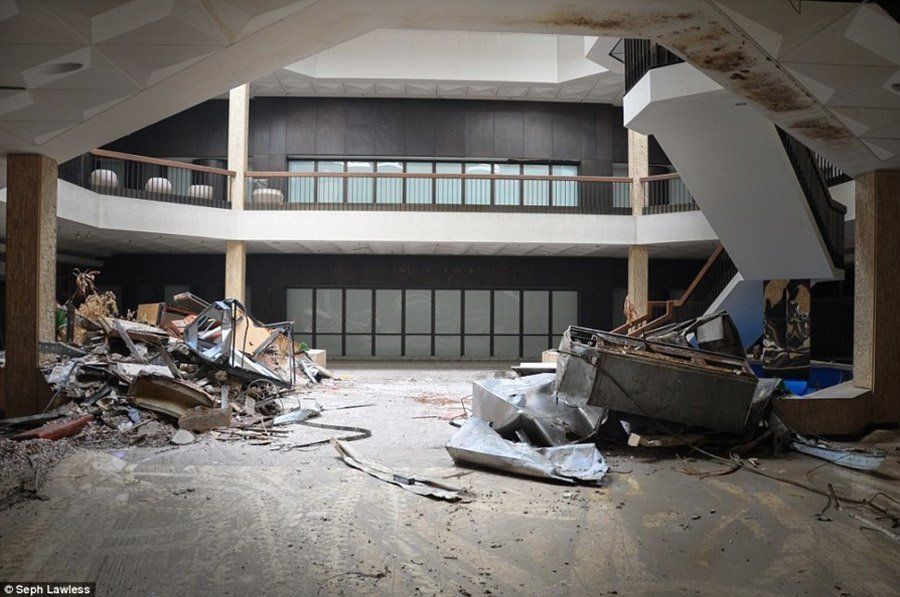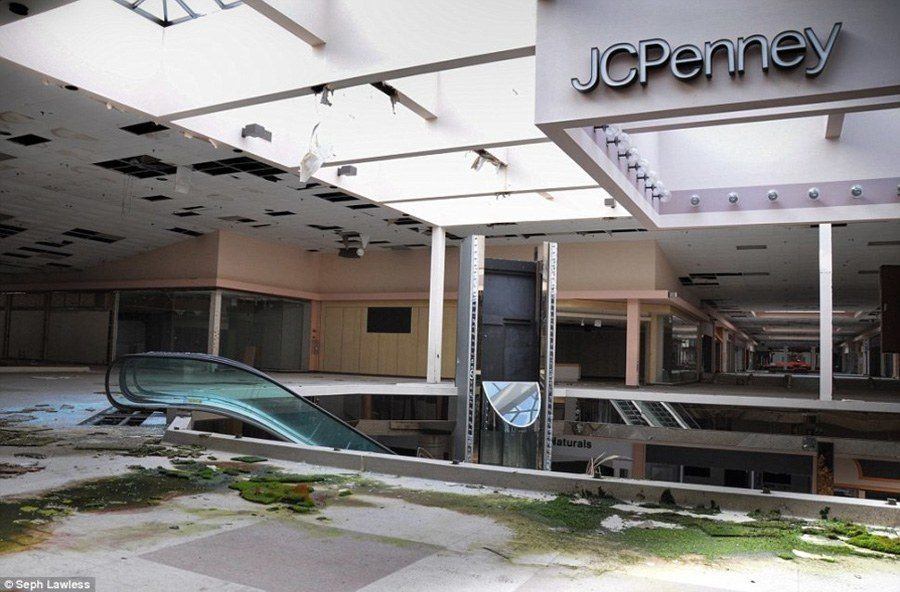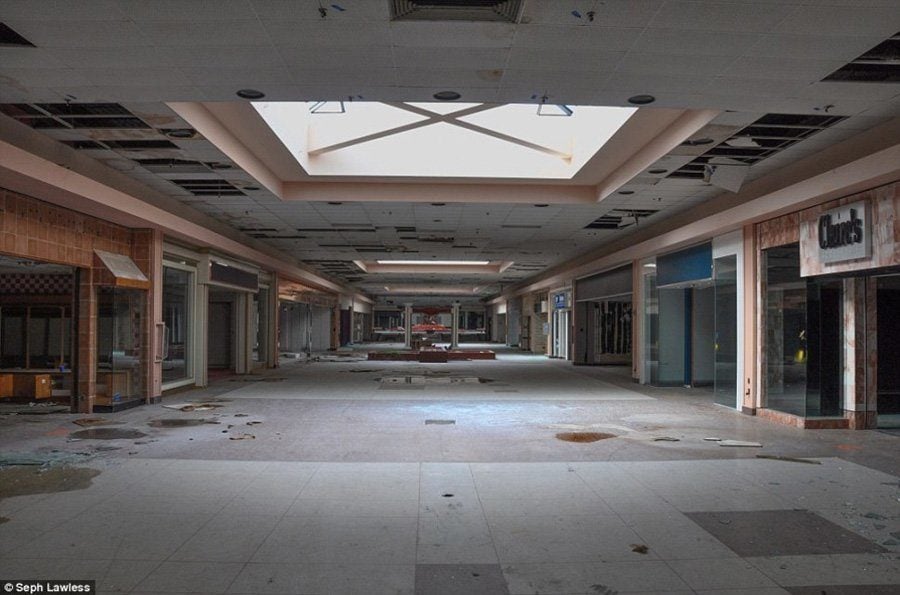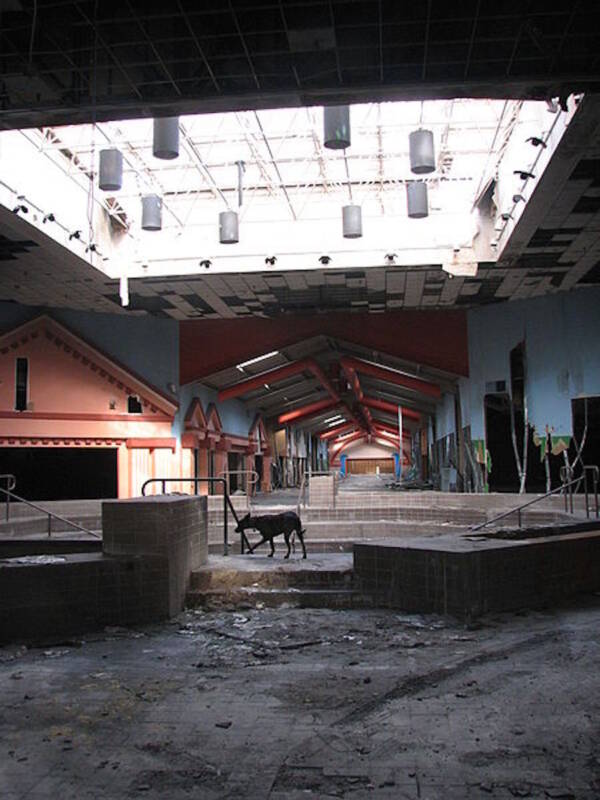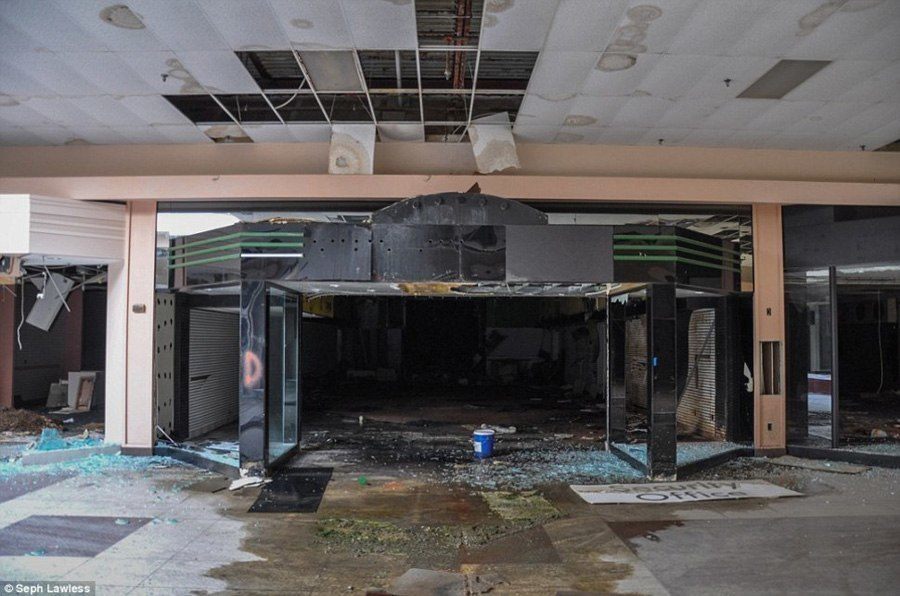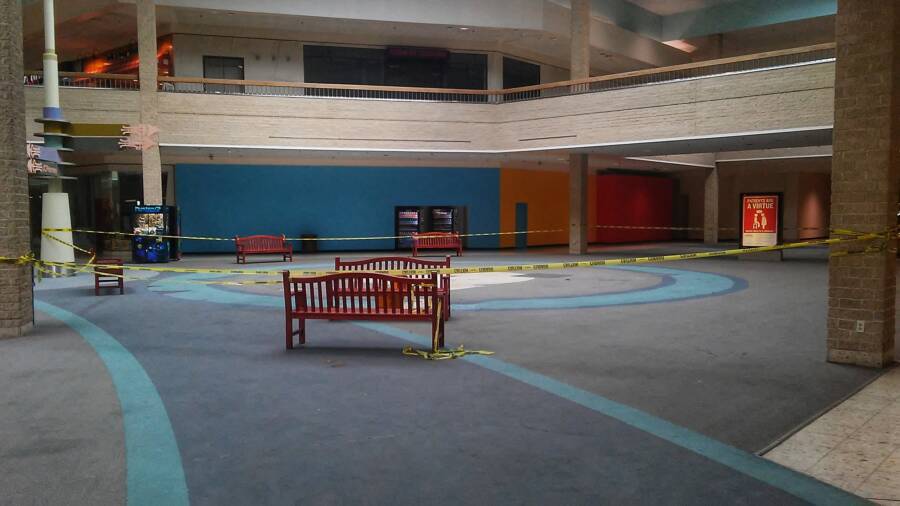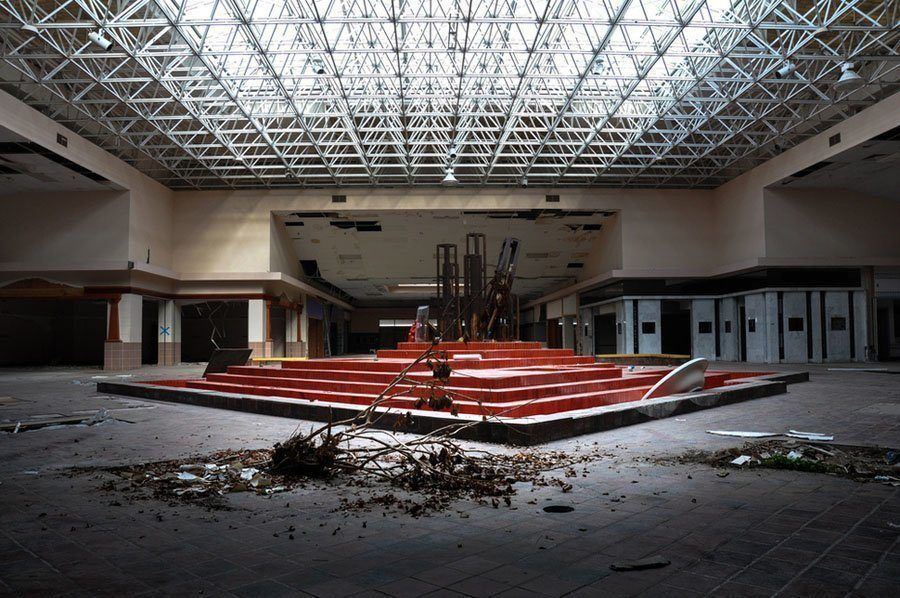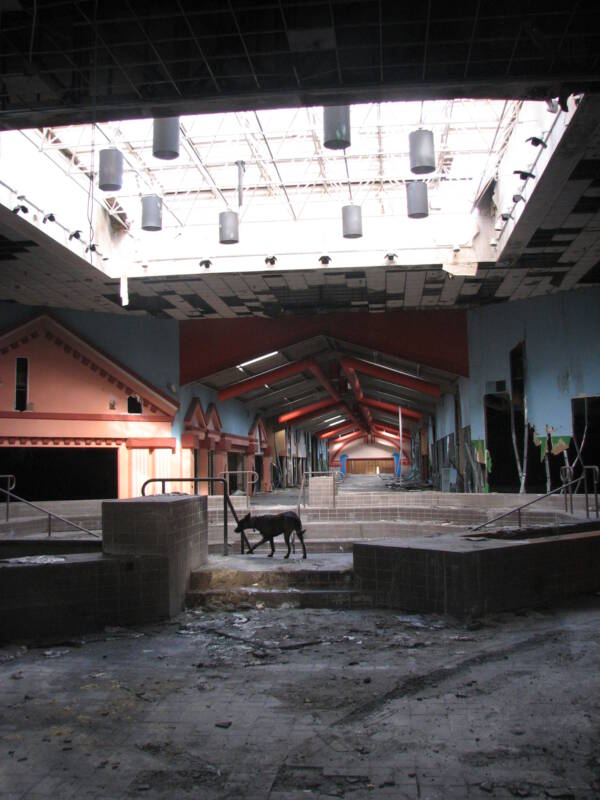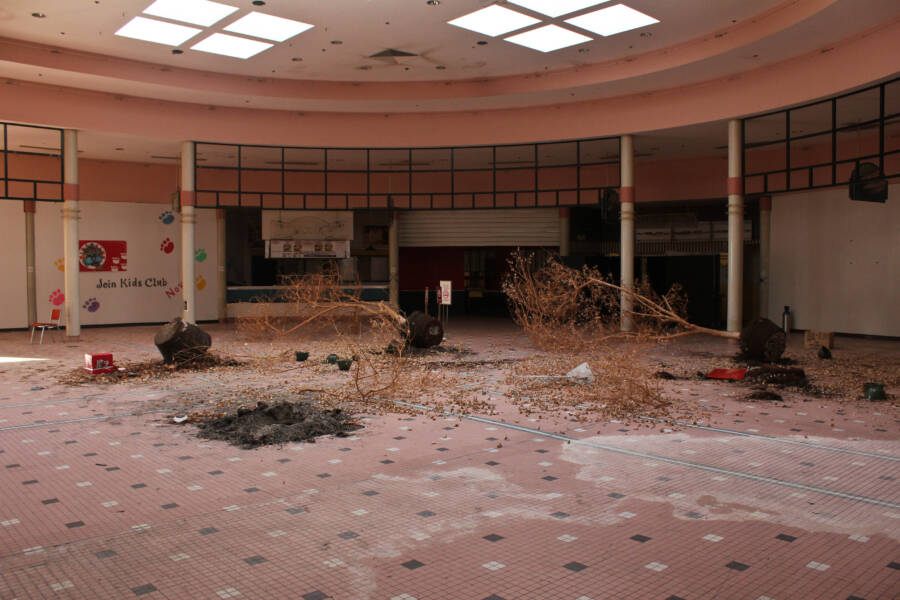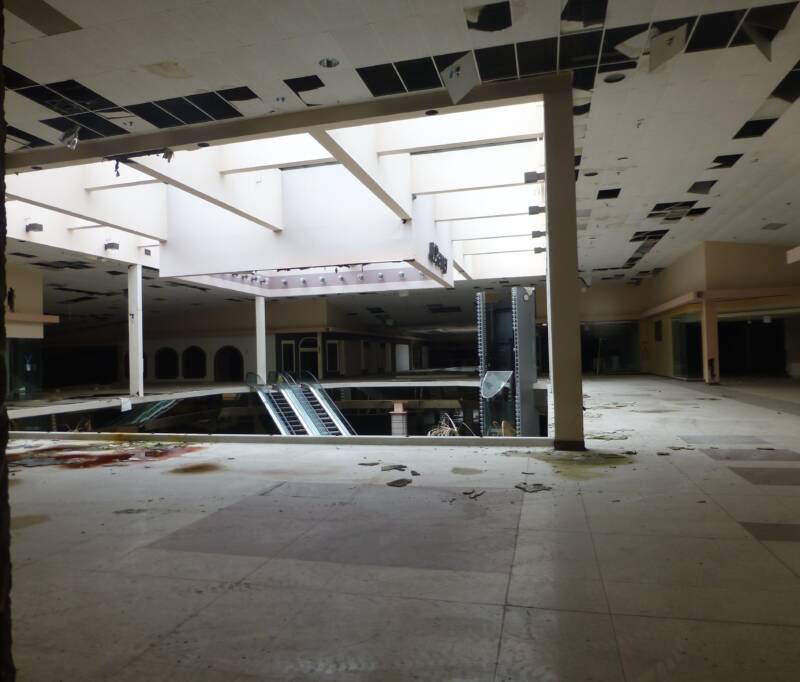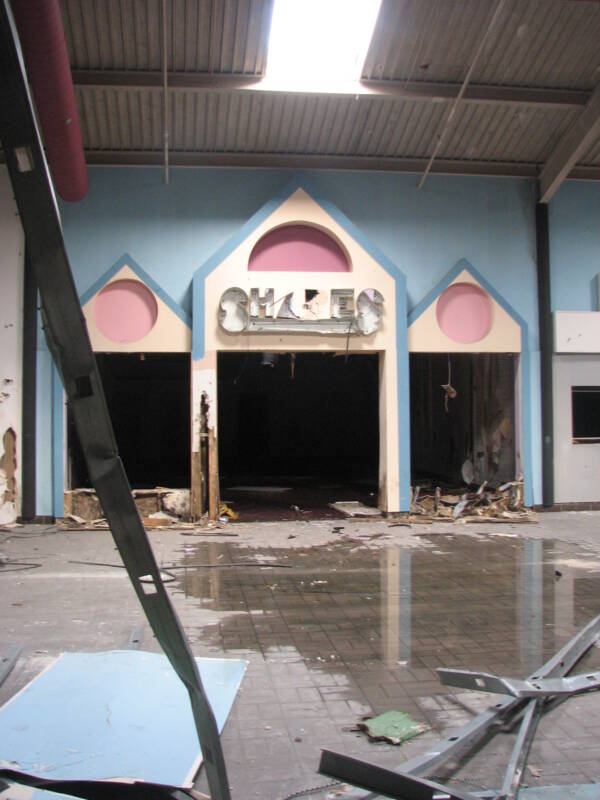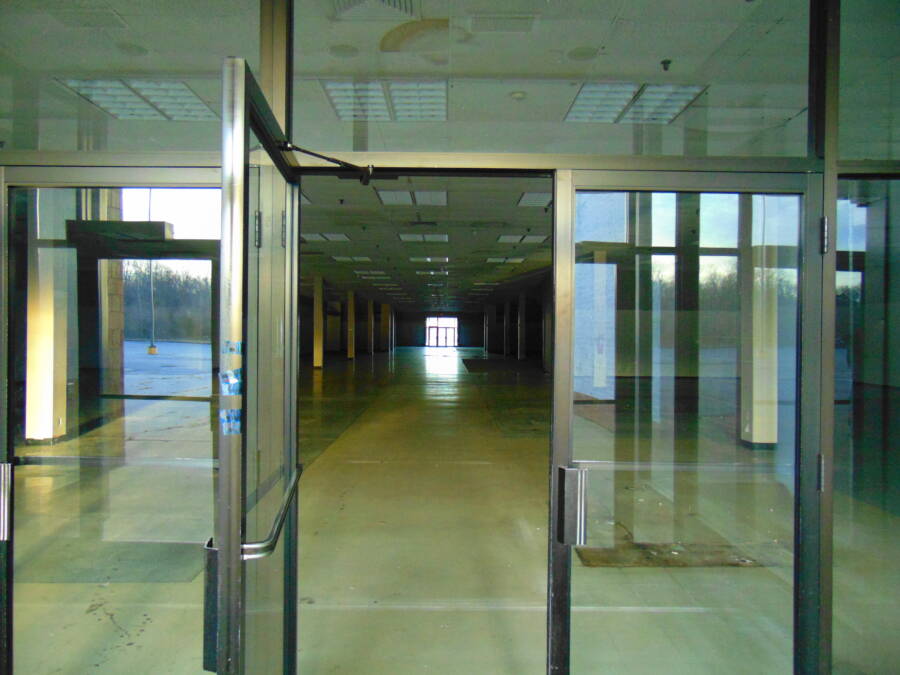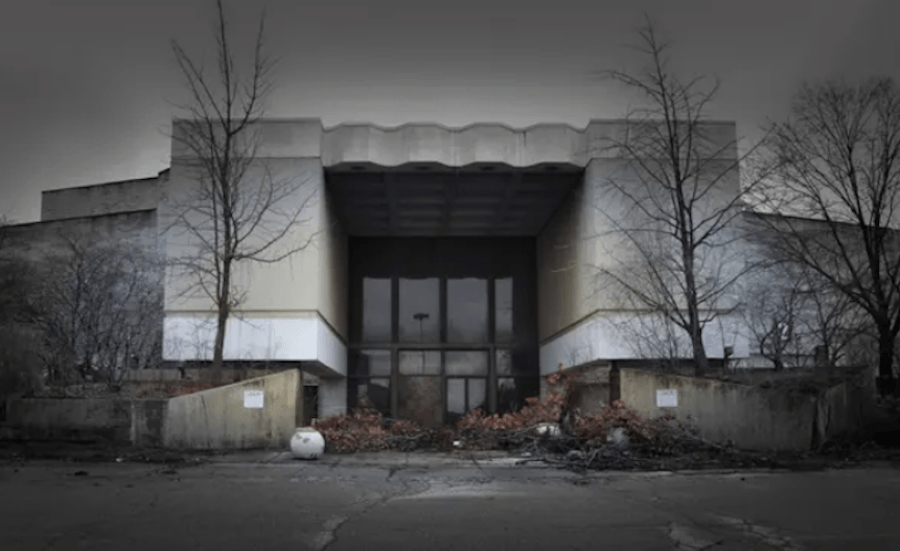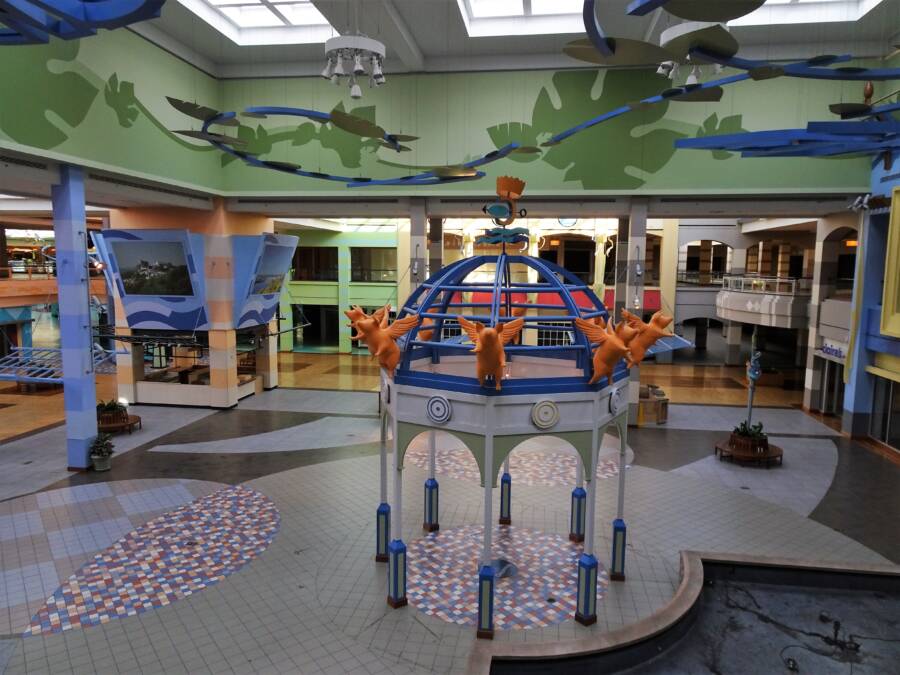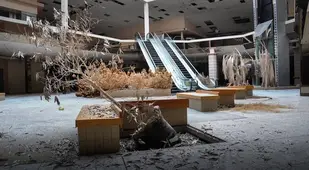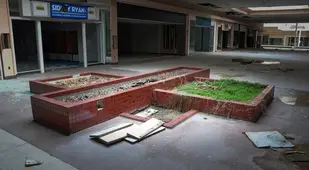Empty malls across America are being abandoned at a staggering rate. But instead of demolishing these dead malls, most cities are allowing them to rot and be reclaimed by nature.
All things must come to an end, and the era of the American shopping mall is no exception. Brick and mortar retail shops — especially niche stores — are becoming increasingly unprofitable. As a result, empty and abandoned malls are now almost everywhere. And whether they’re left to be overtaken by nature or simply remain frozen in time, these dead malls are equally mesmerizing and unnerving.
Malls enjoyed a booming heyday in the 1970s and 1980s — even as the economy was tanking. This was when the wealthy (and usually white) people migrated away from urban zones and into the suburbs. They purchased glistening new homes and went shopping to fill their spacious rooms and closets.
Malls became cultural symbols of the time, as well as marketplaces. The wide variety of goods in one place was like a Sears catalog come to life. Add in the social gathering aspect, and it's easy to see how the mall became as iconic as it did.
The media reflected this, as many films — especially ones from the 1980s and 1990s — heavily feature shopping malls as important locations. Mallrats, Clueless, The Blues Brothers, and Dawn of the Dead all have characters who spend major time in malls (though one just happens to be filled with zombies).
Today, as abandoned malls have become the norm, the very notion of these indoor shopping centers has taken on an entirely different character. Gillian Flynn, author of Gone Girl, says, "For kids of the '80s especially, dead malls have a very strong allure. We were the last of the free-range kids, roaming around malls, not really buying anything, but just looking. To see all those big looming spaces so empty now — it's a childhood haunting."
What Shopping Centers Were Like Before The Era Of Dead Malls
The idea of the American mall began in Minnesota, and that's where it reached its peak.
Edina, Minnesota is home to the very first enclosed shopping mall. Designed by Victor Gruen in 1956, the Southdale Mall is a climate-controlled complex. It has a central atrium, two floors, and escalators.
Gruen wanted to recreate the pedestrian experience of European cities by designing a place for the community in the deserts of suburbia. Americans were enthralled by their automobiles, and the mall would be primarily used for shopping, but also for relaxation, green space, food, and fun.
Until this first enclosed shopping mall, retail areas were characteristically extroverted. They had separate windows and entrances. The new malls were introverted: Everything was focused on the inside.
Not everyone was a fan of this concept. "You should have left downtown downtown," architect Frank Lloyd Wright grumpily proclaimed during his visit to Southdale.
It has undergone numerous renovations and store closings over the years, but when Southdale first opened, it was downright glamorous. It cost $20 million, which went a long way back in 1956.
Minnesota also hosts one of the biggest malls in the nation, and it attracts approximately 40 million visitors a year. The gigantic Mall of America takes up 96.4 acres — enough to fit seven Yankee Stadiums inside. This may seem like it'd be an environmental disaster, but the mall does its part to be green.
With no central heating, indoor temperatures are maintained year-round with solar energy, skylights, and lighting. More than 30,000 live plants act as natural air purifiers, which is helpful as the mall is large enough to require its own zip code.
Both Southdale and The Mall of America still stand today, but whether or not they'll survive the culling of retail chains, or succumb and become dead malls, remains to be seen.
Why Abandoned Malls Are Everywhere Today
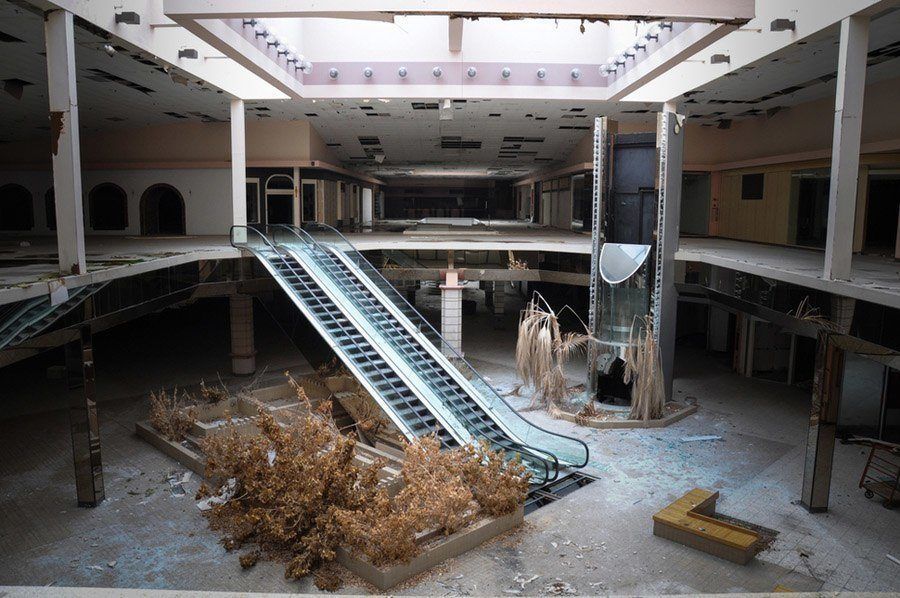
Seph LawlessThe empty mall at Rolling Acres in Akron, Ohio.
The insane popularity of the mall ultimately meant that corporations built too many of them. "Developers realized they could put a large, flat building in the middle of a field and quickly make money — so for decades... that's what they did," notes Amanda Nicholson, a professor of retail practice at Syracuse University.
But they didn't account for one thing: the invention of the internet.
Online shopping meant you could get virtually anything you needed without leaving the comfort of your home. So malls that were trying to survive during the start of the online shopping boom never stood a fighting chance.
Of course, now customers are no longer wanting to keep their shopping introverted, as was the mall's design. Products are tied to influencers in a world with instant access to everything. Deliveries and un-boxings have become YouTube "haul" videos as attention is bought and sold like currency.
Who needs to "be seen" by locals at a likely empty mall when the whole world is now your oyster?
It's also arguable that malls aren't actually dying at the same rate they once were. Some believe that malls are evolving — and offering experiences and amenities you can't replicate online. Millennials and Gen X-ers express the desire to spend their money on experiences, rather than on material goods.
Whatever the case, the abandoned malls of yesterday aren't likely to be renovated. They'll probably be leveled to make way for the next Southdale, or the next big, glamorous advance in commerce.
If you liked this visual dive into the empty malls of America, check out these haunting images of abandoned Detroit. Then, take a look at these photos of strangely beautiful abandoned places.



